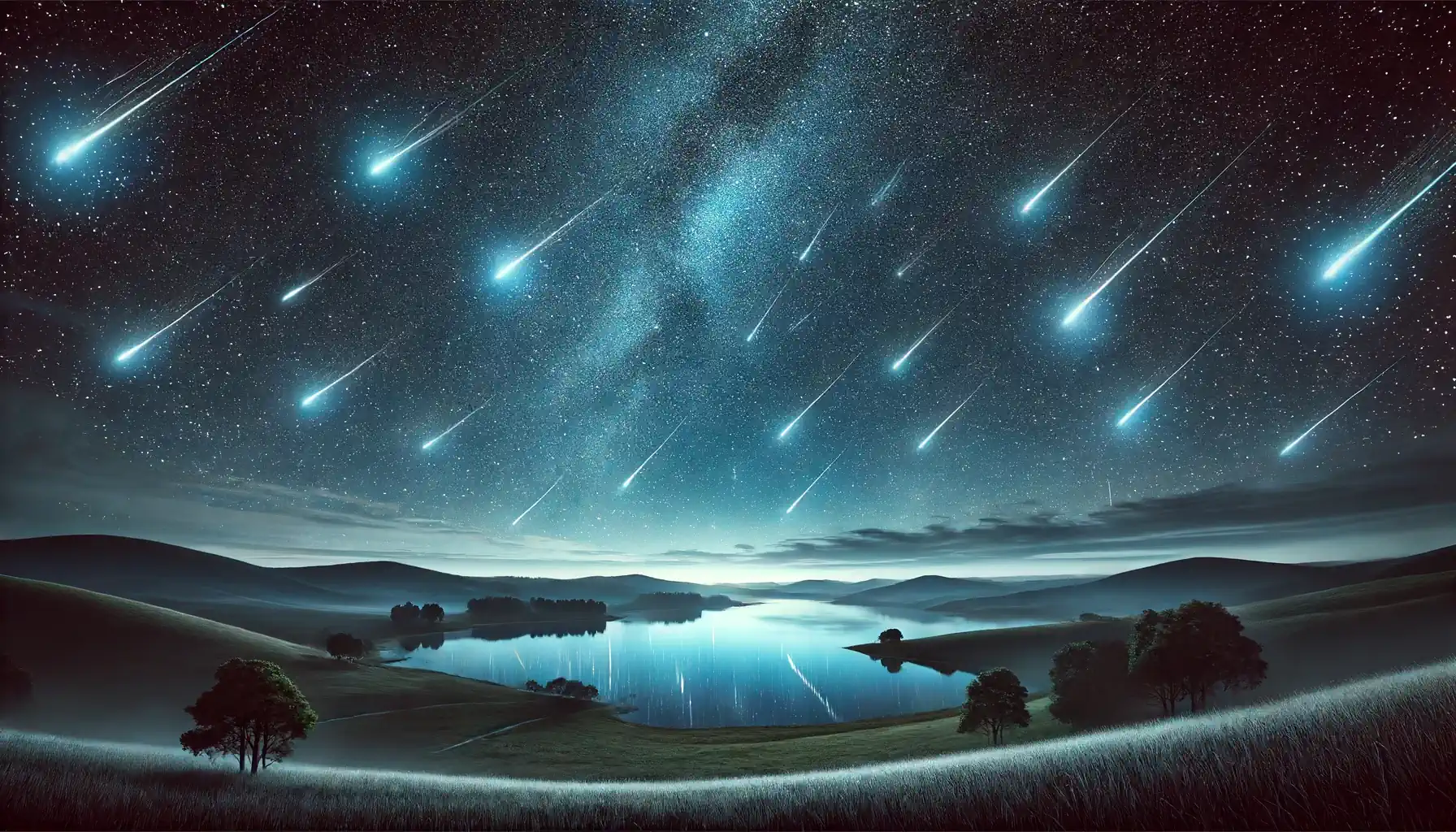
Best viewed: 22-23 April 2023
Ready for some bright, fast meteors? Then get ready for this year’s Lyrids, the oldest recorded meteor shower.
What is the Lyrid meteor shower?
- As the comet C/1861 G1 (Thatcher) orbits the sun, it leaves a trail of debris which the Earth crashes into every April. When the debris burns up in our atmosphere, it produces the meteor shower that we call the Lyrids.
- At its peak, the Lyrids can produce 18 meteors per hour. They’re usually bright with long trails and there’s also a good chance of seeing one that becomes a fireball.
When is the best time to see the Lyrid meteor shower in 2023?
- The best time to see the Lyrids in 2023 is early on Sunday 23rd April.
- Viewing conditions are good for 2023, with the Moon being only 9% full on 22nd April.
- However, the Lyrids will start appearing from 15th April, so keep your eyes peeled. The number of meteors will increase steadily each night until their peak on 22-23rd April and then drop off rapidly before finishing completely by 30th April.
How to View the Lyrid Meteor Shower from the UK
Viewing the Lyrid meteor shower from the UK is simple and enjoyable with a little preparation.
- Check the Weather: Review the forecast and plan for clear skies. If cloudy, try observing on nights leading up to the peak.
- Choose a Dark Spot: Find a safe, dark location with an unobstructed view of the sky, away from buildings, trees, and lights.
- Adjust Your Eyes: Turn off all lights, including phones and torches, for 15 minutes to let your eyes adapt to the darkness. Use a red filter on torches if needed.
- Stay Comfortable: Dress warmly and bring a reclining chair. The Lyrids can be viewed for several hours, so comfort is important. Refreshments are also a good idea for a pleasant experience.
If you are planning to take pictures of meteors, Mary McIntyre has some very useful tips for you on how to take better meteor pictures.
Another great way to watch the Lyrids is to buy or build yourself a meteor camera. You’ll be able to create amazing time lapse videos like the one below and join the UK network of 200+ meteor cameras. You don’t need any previous experience and it’s a great project to do with your kids or students!
Fun facts about the Lyrid meteor shower
- They’re called the Lyrids because the meteors seem to come from the constellation of Lyra. However, they’re actually caused by the Earth crashing into debris left behind by the comet C/1861 G1 (Thatcher).
- The Lyrids are the oldest recorded meteor shower still visible today and were first recorded in 687 BC by Chinese astronomers.
- In the Australian Aboriginal astronomy of the Boorong tribe, the Lyrids represent the scratchings of the Mallee fowl (represented by Vega), coinciding with its nest-building season.
- The average speed for a Lyrid meteor is 30 miles per second (that’s 108,000 miles per hour!). The air in front of the meteor is squashed and heated to thousands of degrees Celsius. The smaller meteors vaporise and leave behind a bright trail but larger meteors can explode as fireballs